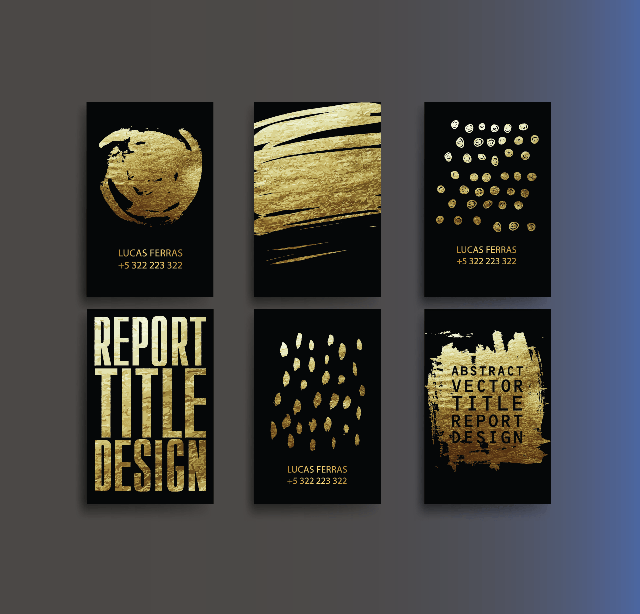The History of Printing
All of us have witnessed printing at its best. The process feels so natural that not only many of us have no idea what goes into it, but we do not even imagine what the world would have been like without it. The history of printing, however, is a fascinating subject that can teach us more about the world and how it came to be the way it is.
Printing is a relatively new concept. Even though the first attempts to produce copies of images and texts date back many centuries, the printing in its current form and state is the invention of the last century altogether.
Let’s dive right into it and learn, how printing came to be what it is.
Ancient printing
Before the fifteenth century, the developments in the history of printing were very slow. People used similar printing methods over and over again. And since many did not have access to information, the methods that one nation used took a long time to reach the other ones.
The first evidence of attempts to create copies of the same source material date back to 3000 BC. At the time, the earliest civilizations used rolled cylinders and small stamps to reproduce images on clothes and other materials.
In the second century AD, Ts’ai Lun invents paper. Around the same time, a Chinese man Pi-Sheng created characters from clay. It is the first documented case of usage of a movable type in printing. The technology is going to be at the heart of all future advancements.
In the twelfth century, papermaking techniques reach Europe, and the advances in the field of printing start taking off.
Printing in the Middle Ages
We have described the ancient period in the history of printing in just a couple of sentences, even though it lasted for several thousand years. The dynamic started to change from the twelfth century, which is a common trend in the development of many technologies.
In the fifteenth century, woodcut printing technique reaches Europe. To create printing, people used to carve out entire texts and images on wooden blocks. The block then was inked and pressed against the paper, creating the printing. Nowadays it is going to seem very impractical, but for the longest time, people used it as the main printing method to copy entire books.
Then, in 1436 Gutenberg started working on the invention of the printing press. That is how he invented his first printing machine, with movable metal types.
From that point on the Gutenberg’s printing machine starts being used throughout Europe. By the end of the century, it becomes the main method of producing copies in over 250 European cities.
In the Sixteenth and seventeenth-century printing becomes not only about the printed materials but also about the technique and craftsmanship of printmaking. People continue building upon the technologies and start inventing typefaces.
Modern Era
Modernism in art also has a big role in the history of printing. It is closely associated with the first printing press. Printing allowed for information to spread much quicker. That on its turn allowed for faster advancements in the field of technologies, and arts.
At the beginning of the eighteenth century, Jakob Christof Le Blon produces the first colorful print, using three different colors. Later on, he adds one more color — black ink — to create lines. People also start printing the first machines.
Around the same time, lithography also gets invented. The printing method allowed to create large quantities of prints at a much lower price and quickly became popular. Printing houses still use a slightly modified version of lithography today.
The nineteenth century is famous for its revolutionary advances in the field of printing. Stanhope invents the more durable and faster printing machine that can print on large sheets of paper. Bauer and Koenig improve upon the machine and build the first cylinder press. We still know it as KBA. With the invention of chromolithographs, people start producing colorful printings. The printing houses used the machine to produce advertisements, postcards and illustrated weekly at a lower cost.
In the same century the two printing methods, that in their improved version are still used around the world also get invented. We even use those technologies to produce prints at Dubaiprint.com, which you can learn more about from this article. Those two printing methods are rotary printing and flexography.
In the middle of the nineteenth century, Richard March Hoe builds the first rotary printing press. It allows to speed up the printing process even more while keeping the quality of prints. At the end of the century, the first flexographic press that uses rubber plates to hold the image is invented.
Contemporary Printing
In the history of printing, the 20th century is when the printing starts escalating at an even crazier speed. It is when the world starts gaining colors and large-quantity printing becomes standard practice.
Ira Washington Rubel in 1903 produces the first offset lithographic press. It was one of the most popular printing methods that allows producing millions of copies at a much lower price. Thanks to the technology, many popular magazines that we still enjoy today including National Geographic gain their popularity and start reaching a million new viewers.
At this time the screen printing also starts being used to produce expensive wallpapers and print on delicate fabrics. The security printing becomes possible and is used in money emission. Book printing also becomes much more affordable.
In the middle of the 20th century home copying machines produced by the brand known as Xerox, start gaining their popularity as well. The newspaper circulation reached its highest level in 1973. The laser printers, also known as digital printers also get invented at the end of the 20th century.
That is where we step in into our century. Many printing companies still use the printing methods of the past, including offset lithography, flexo, and rotator printing, as well as digital printing to print advertisements, publications, packaging, clothes, and even custom-made items.
Even though the overall number of paper prints declines, printing on more complex materials, forms, and shapes become more affordable. The printing stops being only about 2D and flat surfaces, and 3D printing becomes possible, and that is where we are right now.
The role we aspire to have in the history of printing
We want to let you know that Dubaiprint.com – your loyal printing partner – uses all the latest technologies to produce its prints. We care about the experience our customers are having with our product. That is why we will continue keeping with the best trends in the industry and invest in the quality of our prints. Learn more about our services by looking through the large selection of prints we offer. Contact us if you have any questions. We will be happy to answer them.


